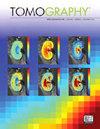Age-Dependent Changes in Effective Dose in Pediatric Brain CT: Comparisons of Estimation Methods
IF 2.2
4区 医学
Q2 RADIOLOGY, NUCLEAR MEDICINE & MEDICAL IMAGING
引用次数: 0
Abstract
The effective dose (ED) in computed tomography (CT) may be calculated by multiplying the dose–length product (DLP) by a conversion factor. As children grow, automatic exposure control increases the DLP, while the conversion factor decreases; these two changes affect the ED in opposite ways. The aim of this study was to investigate the methods of ED estimation according to age in pediatric brain CT. We retrospectively analyzed 980 brain CT scans performed for various clinical indications in children. The conversion factor at each age, in integer years, was determined based on the values at 0, 1, 5, and 10 years provided by the International Commission on Radiological Protection (ICRP), using a curve (curve method) or lines (linear method). In the simple method, the ED was estimated using the ICRP conversion factor for the closest age. We also analyzed the ED estimated by a radiation dose management system. Although the median DLP at each age increased with age, the median ED estimated by the curve method was highest at 0 years, decreased with age, and then plateaued at 9 years. The linear method yielded mildly different results, especially at 2 and 3 years. The ED estimated by the simple method or the radiation dose management system showed inconsistent, up-and-down changes with age. In conclusion, the ED in pediatric brain CT decreases with age despite increased DLP. Determination of the conversion factor at each age using a curve is expected to contribute to estimating the ED in pediatric CT according to age.小儿脑 CT 有效剂量随年龄的变化:估算方法比较
计算机断层扫描(CT)的有效剂量(ED)可通过剂量-长度乘积(DLP)乘以转换系数来计算。随着儿童的成长,自动曝光控制会增加 DLP,而转换系数则会降低;这两种变化对 ED 的影响是相反的。本研究旨在调查根据年龄估算小儿脑 CT ED 的方法。我们回顾性分析了 980 例因各种临床适应症而进行的儿童脑部 CT 扫描。根据国际放射防护委员会(ICRP)提供的 0、1、5 和 10 岁的数值,采用曲线法(曲线法)或直线法(直线法)确定了各年龄段的转换系数(整数年)。在简单法中,ED 是使用最接近年龄的 ICRP 换算系数估算的。我们还分析了辐射剂量管理系统估算的辐射剂量。虽然每个年龄段的 DLP 中位数都随着年龄的增长而增加,但曲线法估算的 ED 中位数在 0 岁时最高,随着年龄的增长而下降,到 9 岁时趋于平稳。线性法得出的结果略有不同,尤其是在 2 岁和 3 岁时。用简单方法或辐射剂量管理系统估算的 ED 随年龄的变化呈不一致的上下变化。总之,尽管 DLP 有所增加,但小儿脑 CT 的 ED 会随着年龄的增长而降低。使用曲线确定各年龄段的换算系数有望有助于根据年龄估算小儿 CT 的 ED。
本文章由计算机程序翻译,如有差异,请以英文原文为准。
求助全文
约1分钟内获得全文
求助全文
来源期刊

Tomography
Medicine-Radiology, Nuclear Medicine and Imaging
CiteScore
2.70
自引率
10.50%
发文量
222
期刊介绍:
TomographyTM publishes basic (technical and pre-clinical) and clinical scientific articles which involve the advancement of imaging technologies. Tomography encompasses studies that use single or multiple imaging modalities including for example CT, US, PET, SPECT, MR and hyperpolarization technologies, as well as optical modalities (i.e. bioluminescence, photoacoustic, endomicroscopy, fiber optic imaging and optical computed tomography) in basic sciences, engineering, preclinical and clinical medicine.
Tomography also welcomes studies involving exploration and refinement of contrast mechanisms and image-derived metrics within and across modalities toward the development of novel imaging probes for image-based feedback and intervention. The use of imaging in biology and medicine provides unparalleled opportunities to noninvasively interrogate tissues to obtain real-time dynamic and quantitative information required for diagnosis and response to interventions and to follow evolving pathological conditions. As multi-modal studies and the complexities of imaging technologies themselves are ever increasing to provide advanced information to scientists and clinicians.
Tomography provides a unique publication venue allowing investigators the opportunity to more precisely communicate integrated findings related to the diverse and heterogeneous features associated with underlying anatomical, physiological, functional, metabolic and molecular genetic activities of normal and diseased tissue. Thus Tomography publishes peer-reviewed articles which involve the broad use of imaging of any tissue and disease type including both preclinical and clinical investigations. In addition, hardware/software along with chemical and molecular probe advances are welcome as they are deemed to significantly contribute towards the long-term goal of improving the overall impact of imaging on scientific and clinical discovery.
 求助内容:
求助内容: 应助结果提醒方式:
应助结果提醒方式:


